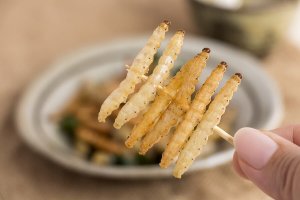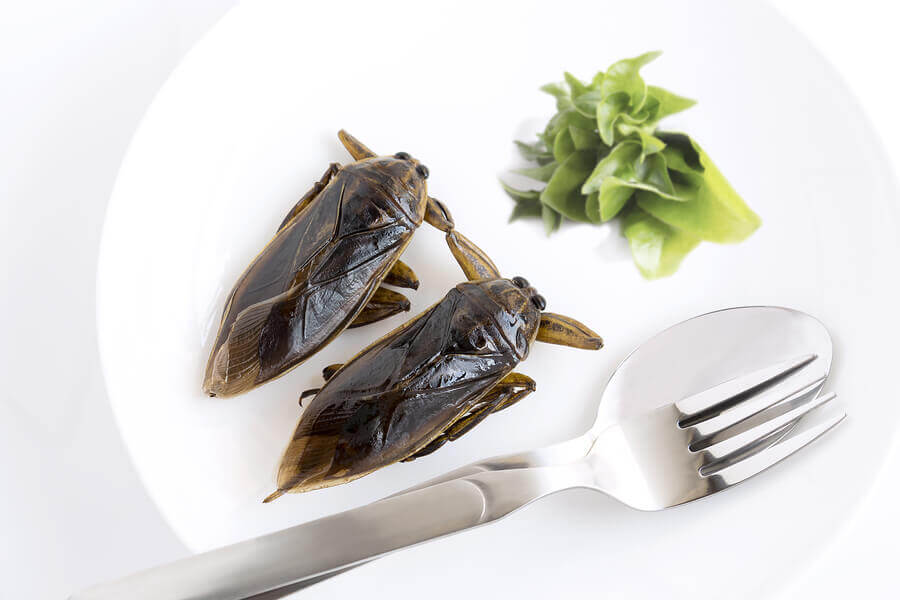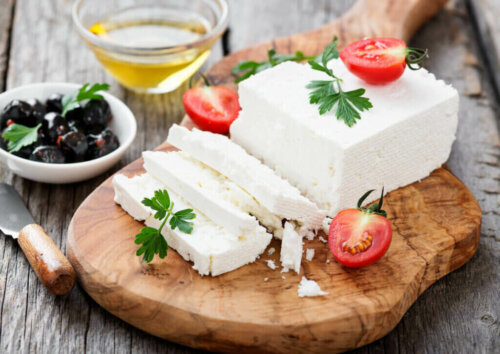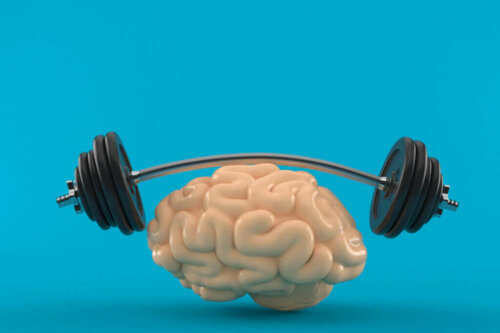Future Protein Sources: Insects

Countries such as Thailand or Mexico have included Coleoptera, Hymenoptera, and larva in their diets for centuries. Commonly known as insects, they have the nutritional value that could sustain people all over the world should other food sources dwindle.
Our planet and all living beings are constantly evolving. Sometimes, certain circumstances push us to find ways to survive. More and more people are inhabiting the Earth and one day, we might not find ourselves with such an appetizing menu.
Future food sources
If the human population continues to grow as it does today, the planet will become home to approximately 10 billion people in ten years. Should the calculations be true, researchers are uncertain if food products such as meats, vegetables or seeds can cover the number of consumers.
In response to the uncertainty, governments should prepare dietary systems or norms that help continue the existence of humanity. Some governments are looking into 3D-printing food sources, gene editing of fresh produce or exploiting algae.
But today, we want to talk about a food source that you see and can access in your everyday. Insects! Many people actually prefer not to think about it!
Insects: small and ugly but nutritious
Insects come in many types and sizes: with wings, stingers, as a larva or even venomous. Below, read about the nutrition that they can offer human beings as well as their environmental benefits:
Great source of proteins and minerals
For every 100 grams of insects, 10 to 20 grams is protein. In addition, they might only contain 0 to 10 grams of fat. They also have high water content and boast many basic minerals to keep you healthy such as calcium or iron.

Examples of nutritious insects:
- Grasshoppers or crickets: every 100 grams of these insects contain 20 grams of protein, 6 grams of fat, 4 grams of carbohydrate, 70 grams of water and 150 calories.
- Worms: 100 grams of worms have 20 grams of protein, 8 grams of fat, 2 grams of carbohydrate, 70 grams of water and 152 calories.
- Ants or termites: in a 100-gram serving, ants and termites can supply 14 grams of protein, 1 gram of fat, 10 grams of carbohydrate, 75 grams of water and 105 calories.
There are nearly 315 stones of insects per human being
Imagine going to the supermarket and not being able to find what you need? But, edible insects are more than plenty. In fact, they’re almost guaranteed in dismal environment conditions. Even if the human race became extinct, many insects would still survive.
Insects are helpful for the environment
Meat production– which has been around throughout our lives– and methane and CO2 emissions have a terrible impact on the atmosphere. Insects, on the other hand, have a much smaller eco-footprint. Additionally, their small size would allow for large-scale production.
Eating insects: a growing concept
As we explained earlier in our post, many countries are beginning to turn to insect food sources. Some of the said countries are even in Europe. Today, you can find certain insect-based products in supermarkets.
In the next five years, Europe will produce 100,000 tons of insects for human consumption. Make no mistake, the bug business will be worth billions in the future.

Before you say “no”, would you be willing to try insects?
For the readers who already consume insects, you won’t have any problems in continuing your normal dietary habits, while others may be warier. Meanwhile, many readers will have a hard time even considering it.
What about people who hate bugs? If you had no other option but insect food sources, would you try it?
To wrap up, we want to emphasize that if you don’t want to find yourself in that reality, let’s start taking better care of the world around us. If we all pitch in, we can all enjoy our favorite, local food sources.
Countries such as Thailand or Mexico have included Coleoptera, Hymenoptera, and larva in their diets for centuries. Commonly known as insects, they have the nutritional value that could sustain people all over the world should other food sources dwindle.
Our planet and all living beings are constantly evolving. Sometimes, certain circumstances push us to find ways to survive. More and more people are inhabiting the Earth and one day, we might not find ourselves with such an appetizing menu.
Future food sources
If the human population continues to grow as it does today, the planet will become home to approximately 10 billion people in ten years. Should the calculations be true, researchers are uncertain if food products such as meats, vegetables or seeds can cover the number of consumers.
In response to the uncertainty, governments should prepare dietary systems or norms that help continue the existence of humanity. Some governments are looking into 3D-printing food sources, gene editing of fresh produce or exploiting algae.
But today, we want to talk about a food source that you see and can access in your everyday. Insects! Many people actually prefer not to think about it!
Insects: small and ugly but nutritious
Insects come in many types and sizes: with wings, stingers, as a larva or even venomous. Below, read about the nutrition that they can offer human beings as well as their environmental benefits:
Great source of proteins and minerals
For every 100 grams of insects, 10 to 20 grams is protein. In addition, they might only contain 0 to 10 grams of fat. They also have high water content and boast many basic minerals to keep you healthy such as calcium or iron.

Examples of nutritious insects:
- Grasshoppers or crickets: every 100 grams of these insects contain 20 grams of protein, 6 grams of fat, 4 grams of carbohydrate, 70 grams of water and 150 calories.
- Worms: 100 grams of worms have 20 grams of protein, 8 grams of fat, 2 grams of carbohydrate, 70 grams of water and 152 calories.
- Ants or termites: in a 100-gram serving, ants and termites can supply 14 grams of protein, 1 gram of fat, 10 grams of carbohydrate, 75 grams of water and 105 calories.
There are nearly 315 stones of insects per human being
Imagine going to the supermarket and not being able to find what you need? But, edible insects are more than plenty. In fact, they’re almost guaranteed in dismal environment conditions. Even if the human race became extinct, many insects would still survive.
Insects are helpful for the environment
Meat production– which has been around throughout our lives– and methane and CO2 emissions have a terrible impact on the atmosphere. Insects, on the other hand, have a much smaller eco-footprint. Additionally, their small size would allow for large-scale production.
Eating insects: a growing concept
As we explained earlier in our post, many countries are beginning to turn to insect food sources. Some of the said countries are even in Europe. Today, you can find certain insect-based products in supermarkets.
In the next five years, Europe will produce 100,000 tons of insects for human consumption. Make no mistake, the bug business will be worth billions in the future.

Before you say “no”, would you be willing to try insects?
For the readers who already consume insects, you won’t have any problems in continuing your normal dietary habits, while others may be warier. Meanwhile, many readers will have a hard time even considering it.
What about people who hate bugs? If you had no other option but insect food sources, would you try it?
To wrap up, we want to emphasize that if you don’t want to find yourself in that reality, let’s start taking better care of the world around us. If we all pitch in, we can all enjoy our favorite, local food sources.
All cited sources were thoroughly reviewed by our team to ensure their quality, reliability, currency, and validity. The bibliography of this article was considered reliable and of academic or scientific accuracy.
- José Antonio Heredia Álvarez. Carta Económica Regional Mayo – junio, Núm. 18 (1991). http://www.cartaeconomicaregional.cucea.udg.mx/index.php/CER/article/view/7317
-
Ramos Elorduy, J. Los insectos como fuente de proteína en el futuro. México. Edit Limusa. 1987. 148 p
-
Sánchez, P; Hevia, P. Consumo de insectos, alternativa alimentaria del neotrópico. En: Boletín. Entomology. Venezuela. Vol., 12 No.1 (1997); p.125-127.
- Los insectos como alimento humano: Breve ensayo sobre la entomofagia, con especial referencia a México.
Insects as human food: Short essay on entomophagy, with special reference to Mexico Julieta Ramos-Elorduy B.1 y José Luis Viejo Montesinos21 Instituto de Biología, UNAM, México. [email protected]. 2 Departamento de Biología. Universidad Autónoma de Madrid.
C/. Darwin, 2, 28049 Madrid. España. [email protected]
This text is provided for informational purposes only and does not replace consultation with a professional. If in doubt, consult your specialist.








